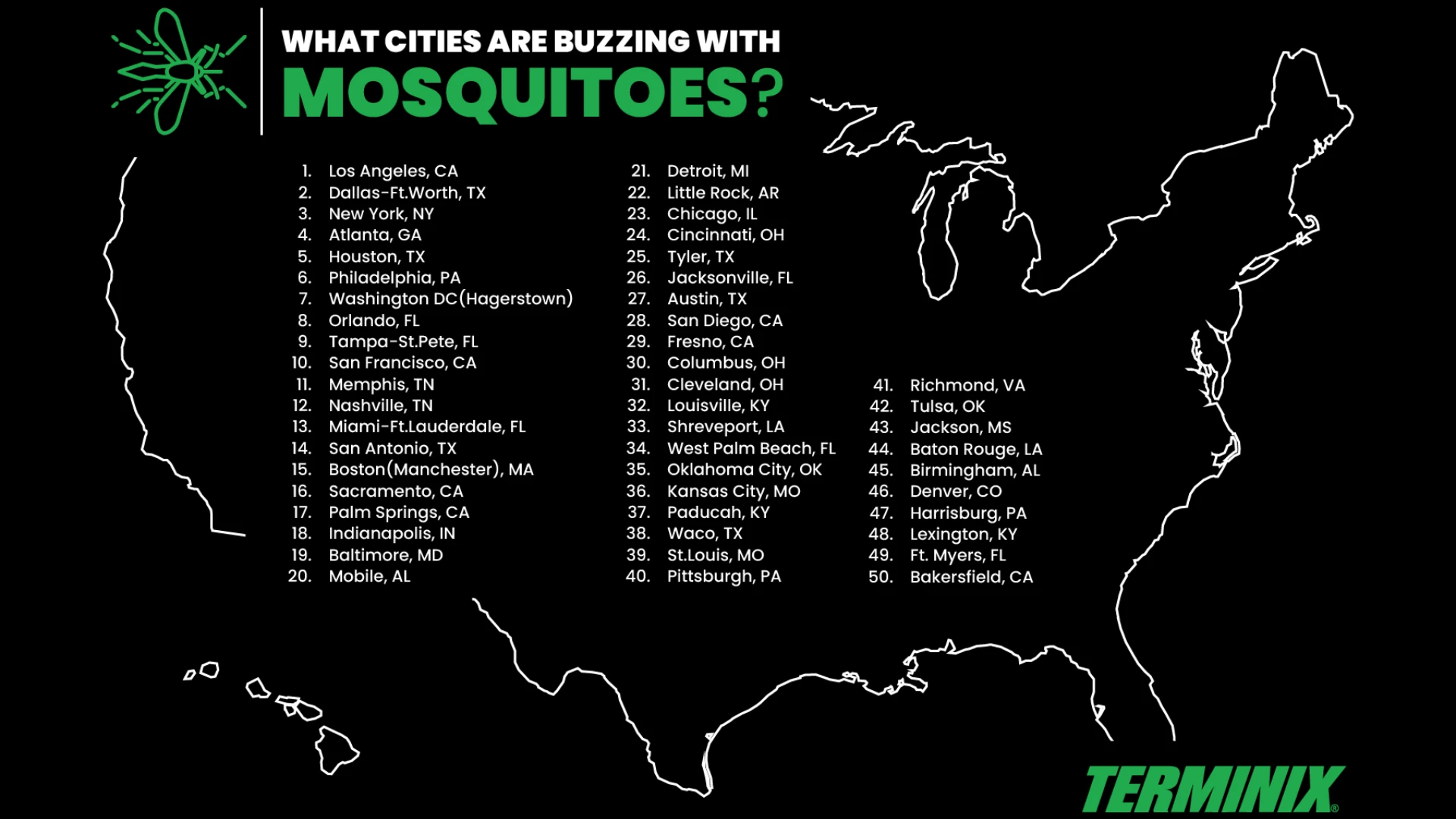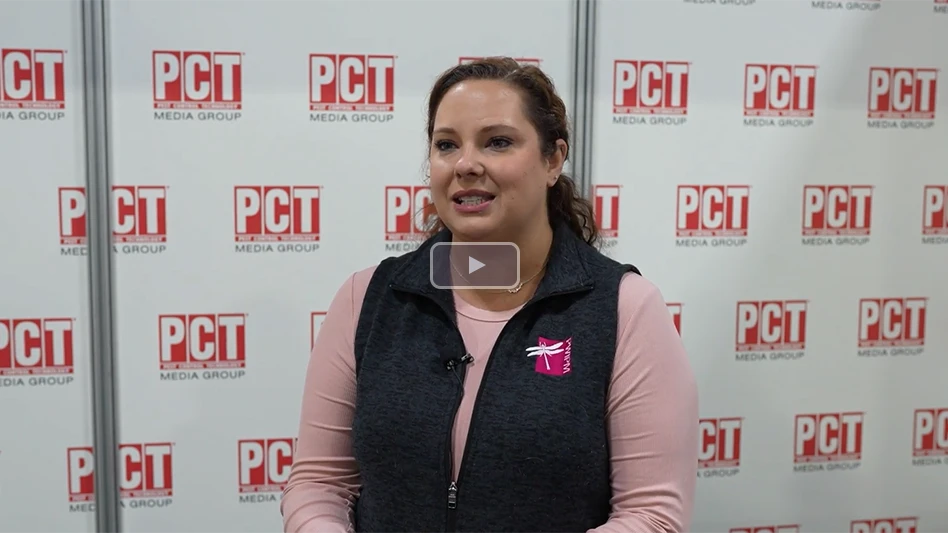With technology progressively advancing, regulations continually tightening and customer expectations ever on the rise, today’s pest management professional needs to be increasingly skilled in both technical applications and customer relationship management. At the same time, the industry’s image and pricing continues to take knocks from both within and outside. It is the combination of these factors that makes recruiting, hiring and retention of good-fit employees one of the greatest challenges for today’s pest management companies.
It’s not necessarily more difficult to get applicants to the door, said Mark O’Hara, president, Anderson Pest Control, Elmhurst, Ill. But finding quality applicants who fit the position and the company culture is a challenge. “It’s more than recruiting,” he said, “it’s identifying those individuals that will be the best fit for the job.”
SERVICE SKILLS. “We really need people with different skills than those whom we have traditionally hired,” said Ned Ewart, president, Bug Master, Austin, Texas. Both field and office personnel need to be more sophisticated and have technical and people skills. “I can think back to a time when a meaningful percentage of technicians were marginally illiterate or functionally so,” Ewart said. But today, “we have to have a more capable, better read, more learned technician in the field than what the industry has probably been accustomed to. If we’re honest with ourselves, that was the standard,” he said. “That just doesn’t fit our needs anymore.” Nor does it meet rising customer expectations.
“What the customer expects has increased really dramatically,” said Andrea Mooberry, vice president, American Pest Control, Hanna City, Ill. People used to wait three days before making a second call to a company, she said, but not anymore. Today, if a customer doesn’t get a response within 15 minutes, they call back. American’s policy is 24-hour response time, “but that now looks ridiculous,” Mooberry acknowledges. “If you don’t call back in 30 minutes, someone else will be there.”
Customers also expect technicians to have a more professional image and stronger communication skills, O’Hara explained. In addition, PCOs have found that customers are more sensitive to the use of pesticides; want more Integrated Pest Management; expect quick response and reliability; are looking for more technical ability, such as computerized reporting; and, in general, just expect a higher level of service than they did in the past.
Anderson has addressed this expectation by shifting its new-hire training to more of a customer service focus. In the past, O’Hara said, training focused 90 percent on technical topics and 10 percent on customer service. To address today’s customer needs and expectations, Anderson has shifted its training to 65 percent technical and 35 percent customer service.
RECRUITING CHALLENGES. While not addressing “best-fit” hiring, in particular, PCT’s 2005 readership survey does show a variance in opinion on the difficulties of recruiting in general. While only 6 percent responded that it is actually easier to recruit employees today than it was 12 months ago, 40 percent are finding it more difficult, and the majority, 54 percent, find recruiting to be at just about the same level of difficulty as it was a year ago.
Ewart is in agreement with the 6 percent figure, finding today’s labor market to be better for the employer. The real challenge, he said, is “having the skills ourselves to really define and find the people with the skills and temperament we need.” There are more recruiting tools available such as the Internet job lists and searches, he said, “but there is a lot of complexity to what is available, and probably not a lot of us are really well informed as to what is available.”
In contrast, whenever the unemployment rate goes down, as it has recently begun to do in certain parts of the country, the pool of applicants goes down, and it becomes a greater challenge to find quality people who will be happy and successful with the company, said Mike Katz, Western Exterminator, Anaheim, Calif. “I don’t know about other industries, but I have seen it become more difficult over the years in our industry,” he said.
INDUSTRY IMAGE. One area that continues to be a recruiting challenge for the pest management industry is its public image. While the industry has come a long way toward improving its image, the perception of the general public toward the pest control industry is still not the highest caliber. And this perception is not improved by such films as the recent remake of “The Bad News Bears,” in which Billy Bob Thornton portrays a beer-guzzling, unprincipled pest control technician. “It’s a real negative image of the industry,” Ewart said, and one that only increases customer concerns and reduces job attraction for quality applicants.
And when the company gets quality applicants, it does all it can to hold onto them. “If the right person walks in the door, we will hire them even if we don’t have a need at that time,” Mooberry said.
Recruiting has always had its challenges, said Ira Lenner, vice president, Arrow Environmental Services, Morganville, N.J., that is, finding applicants with a strong work ethic, ability to stay focused and desire to see the industry as one with a viable future. “We are now finding that we have to go to many other sources than the help wanted ads,” he said.
Many companies are working to find good recruits by expanding the sources, means and methods by which they advertise open positions, and by seeking more diversity within the workforce, such as the active recruiting of women and older workers, demographics that, though not excluded in the past, were also not of key focus for many companies.
“We probably have far fewer women applying for jobs in our industry than the job itself would merit,” Ewart said, adding that he believes this is, at least in part, due to the industry’s tendency to advertise in sections such as “trades,” which don’t traditionally have high female readership. As the industry expands to more general advertising, Ewart sees the broader access as bringing in a more diverse applicant base — including the older worker.
AN AGING WORKFORCE. “It’s not unusual that we have people applying for jobs that are in their 40s at least,” Ewart said. “There was a time when the vast majority was under 25.”
O’Hara agrees. “This has been traditionally more of a young man’s job. But we are hiring an increasing amount of over 40 — and we’re happy about it.” Anderson has, in fact, seen a gradually increasing percentage of older workers among its employees. In 2000, only 17 percent of its workforce was 40 or older, today that percentage has increased to 40 percent.
O’Hara has found that older workers are not only traditionally more stable, but, as a general rule, they take training more seriously; appreciate the opportunity; have better communication skills, customer service and patience; pay more attention to detail; and, overall, have better retention rates — another aspect backed up by his company’s statistics: While 28 percent of those hired over the last five years were older than 40, only 12 percent of this same group were separated from the company for any reason. “We are recruiting more over 40s, and they are staying,” O’Hara said.
Mooberry sees a strong correlation between the initial period of hire and long-term employee retention. “If we can get them through the first year to two years, then they’ll be here a long, long time,” she said.
PAY FOR PRODUCTION. “Pay is fairly well down the line in job satisfaction,” O’Hara states, but wages and benefits do play a role in both recruiting and retention. This can be difficult in the pest management industry, where pricing can take hits from within. “Our industry doesn’t know how to stay focused with keeping service prices where they’re supposed to be,” Lenner said. When companies undercut their competition with unprofitable pricing just to get business, it affects the entire industry and can make it difficult to provide competitive wages and benefits.
“As our pricing goes up, wages go up because our service technicians are paid on productivity,” Katz said. Even with this, the highest line item in the industry is still labor. But, he said, “People are our No. 1 resource. Nothing happens in our industry without quality people.”
“I do think that if a company doesn’t have some program to retain their employees and isn’t paying attention specifically to employee retention, they’re probably not doing as good a job at that as they need to be,” Ewart said. He said he doesn’t see employees leaving to join other pest management companies as much as other industries. In Texas, it is the technology industry that proves to be a tough workforce competitor. Although that industry has frequent layoffs, it also tends to pay well and have good benefits. Ewart attempts to combat this competition by finding ways for his technicians to increase their productivity so that their wages can also increase.
“I want to raise their hourly wage. I want to give them money,” Lenner said. To do so, he provides opportunities for technicians to add to their base pay, such as commissions, contests, bonuses and referral payments. In addition, Lenner adds incentive by posting contest results each month, so all can see the potential and amounts being attained. He also asks the employees if he can write to their families about their achievements. By receiving notes such as, “Harry got $900 this month in bonuses! He is a pleasure to work with,” the employee attains additional recognition and commendation for his or her achievements.
Such recognition is important in both retention and recruiting. Benefits and wages are important, Mooberry said, but even more important is how the employee is treated — a fact that hasn’t changed through the years. “When you’re trying to hire the very best people, you need to treat them in the very best way,” she said. “Be fair to everyone — that’s all anyone wants.”
As O’Hara says he heard at a recent convention, it’s not enough to treat others the way you’d like to be treated yourself, rather, he said, “Treat others better than you’d like to be treated.” Provide the opportunity to advance. Be more than fair. Don’t let employees get too far down the road without showing them what to do. Provide a stable, kind environment.
And, above all, ensure that each level of management truly cares about and is committed to its people. As Lenner said, “People leave managers, they don’t leave companies.” soi
The author is a frequent contributor to PCT magazine. She can be reached at llupo@giemedia.com.
Get curated news on YOUR industry.
Enter your email to receive our newsletters.
Explore the October 2005 Issue
Check out more from this issue and find your next story to read.
Latest from Pest Control Technology
- Photo Slideshow: Ant Identification Tips
- Video: Top 10 PCT Photo Contest Finalists
- UF/IFAS Study Reveals Boats as Perfect Vessels for Global Termite Spread
- Pest Control Consultants (Iowa) Earns Pinnacle Performance Award
- Syngenta's Chris Keefer Reviews Ant Control, Products in Latest Ant Market Report
- PCT/BASF Launch 2025 Technician of the Year Awards Program
- Target Specialty Products, MGK Partner for Mosquito Webinar
- Cockroach Control and Asthma





